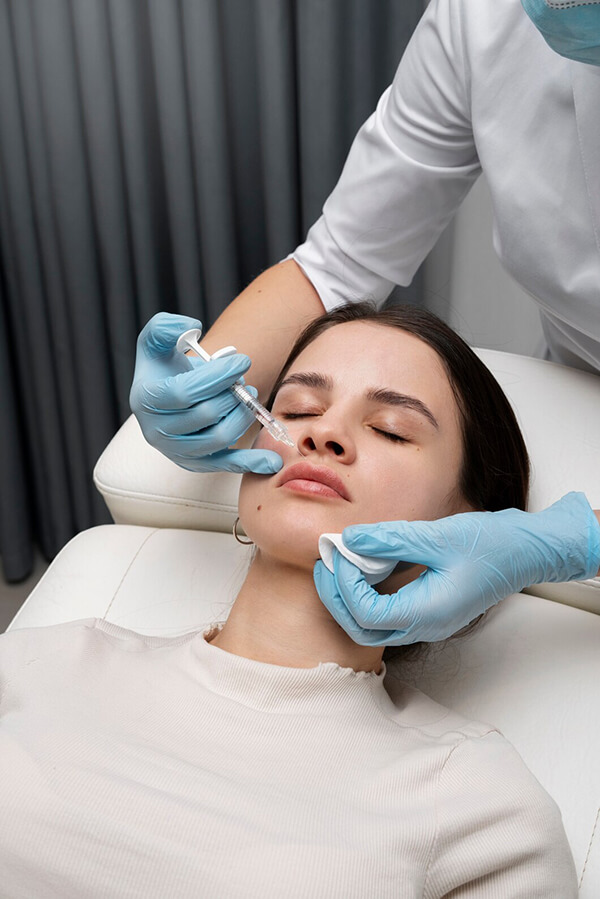
Botox ® Cosmetic Injection and dermal fillers are cosmetic treatments that are minimally invasive, meaning they do not involve surgery.
Botox contains purified bacteria that freeze muscles. In doing so, Botox can help minimize the appearance of lines and wrinkles caused by facial expressions.
Dermal fillers contain ingredients that add fullness to areas that have thinned due to aging. This thinning is common in the cheeks, lips, and around the mouth.
Botox ® reduces the activity of muscles in the face that cause wrinkles. Facial fillers, fill the trouble areas with collagen, which helps to stimulate collagen growth in the face as well as plump and lift the skin to replace collagen loss.
Botox may help to correct dynamic wrinkles, such as crow’s feet around the eyes and horizontal lines on the forehead.
Botox is a purified form of the botulinum toxin that is obtained from bacteria. The tiny, regulated amount of Botox given to correct wrinkles has been used safely for decades.
Treatments made with botulinum toxin are sold under the brand names Botox Cosmetic, Dysport ® , and Xeomin ® .
Botox only works on wrinkles that are caused by muscle movement. These are known as dynamic wrinkles, and are often called “expression lines”.
The most common dynamic wrinkles that Botox can treat are lines on the upper face, such as the “11” between the brows, horizontal lines on the forehead, and crow’s feet around the eyes. These lines are caused by smiling, frowning, squinting, and other facial expressions.
Botox will not work on fine lines and wrinkles caused by sagging or loss of plumpness in the face. These are known as static wrinkles. Static wrinkles include lines in the cheeks, neck, and jowl areas.
Botox is not a permanent treatment. Repeated treatments are necessary for continued wrinkle-reducing effects. Most people find that the muscle-relaxing effect of Botox lasts for 3 to 4 months.
Dermal fillers may help to plump up thinning lips.
Dermal fillers, sometimes called soft tissue fillers, are substances designed to be injected beneath the surface of the skin to add volume and fullness.
The time they take to work, as well as how long they last, also vary. Some fillers last 6 months, while others last up to two years or longer.
People should discuss their individual needs and expectations with their doctor to determine what filler would be the best choice for them.
Different types of dermal fillers are designed to treat varying signs of aging. Depending on the filler selected, they may:
Static wrinkles include those around the mouth and along the cheeks. These wrinkles are usually a result of a loss of collagen and elasticity in the skin.
In summary, the differences between Botox and fillers are:
Botox: This freezes muscles to stop creases and wrinkles caused by facial expressions. These are typically found in the upper face, such as the forehead and around the eyes.
Dermal fillers: These use hyaluronic acid and similar substances to “fill in” or plump areas that have lost volume and smoothness. This includes wrinkles around the mouth, thin lips, and cheeks that have lost fullness. They may also be used on forehead wrinkles, scars, and other areas that need extra volume for a smoother look.
Botox results last 3 to 4 months. Dermal filler results vary, depending on which filler is used.
Because Botox and fillers are different substances designed for different uses, they can sometimes be combined in one treatment. For instance, someone may use Botox to correct lines between the eyes and a filler to correct smile lines around the mouth.
Medi Clinics office specializes in primary care and wellness, offering immigration physicals, compassionate medical services, and advanced Candela laser treatments for body and facial aesthetics.
© 2025 Medi Clinics Tampa All Rights Reserved.